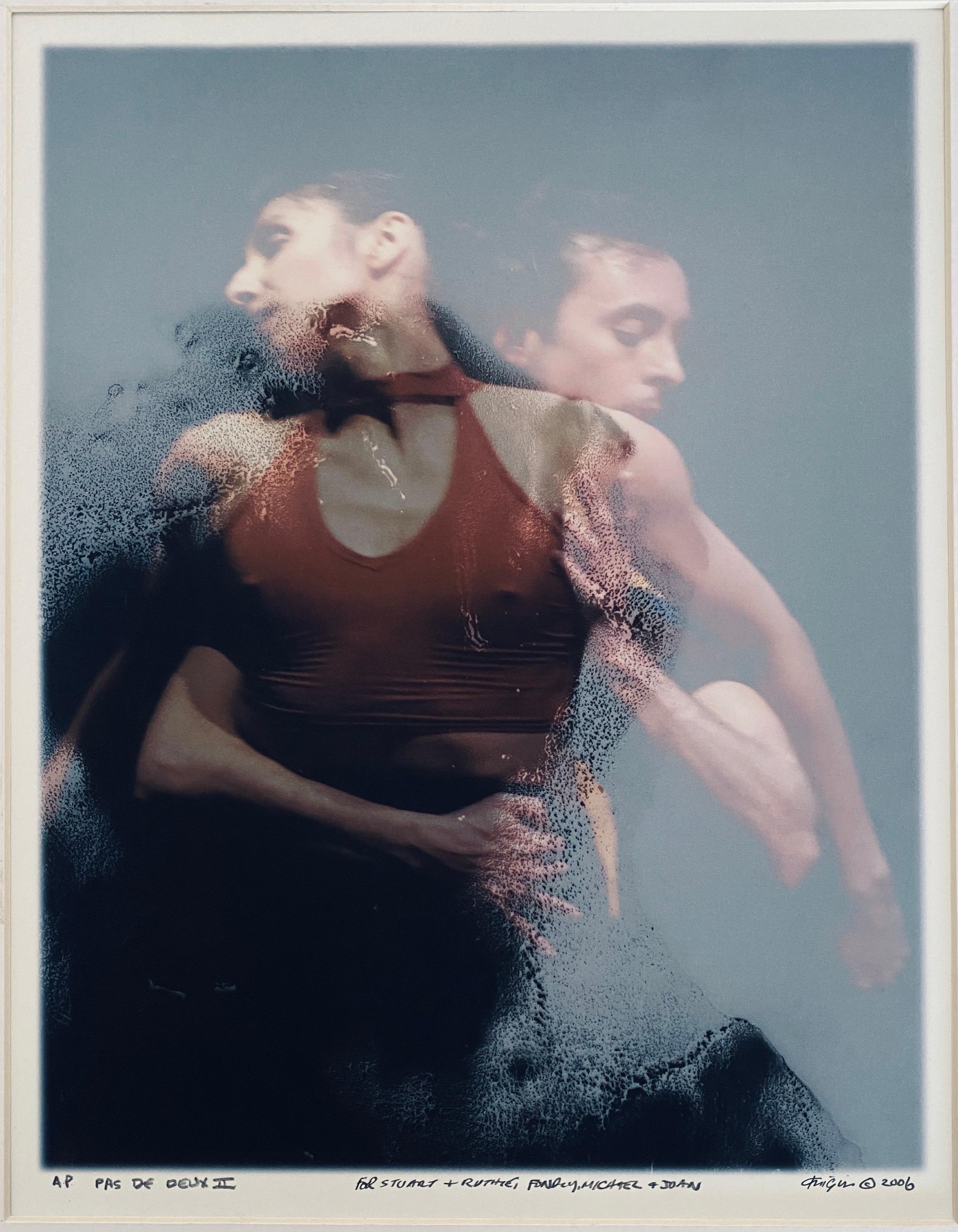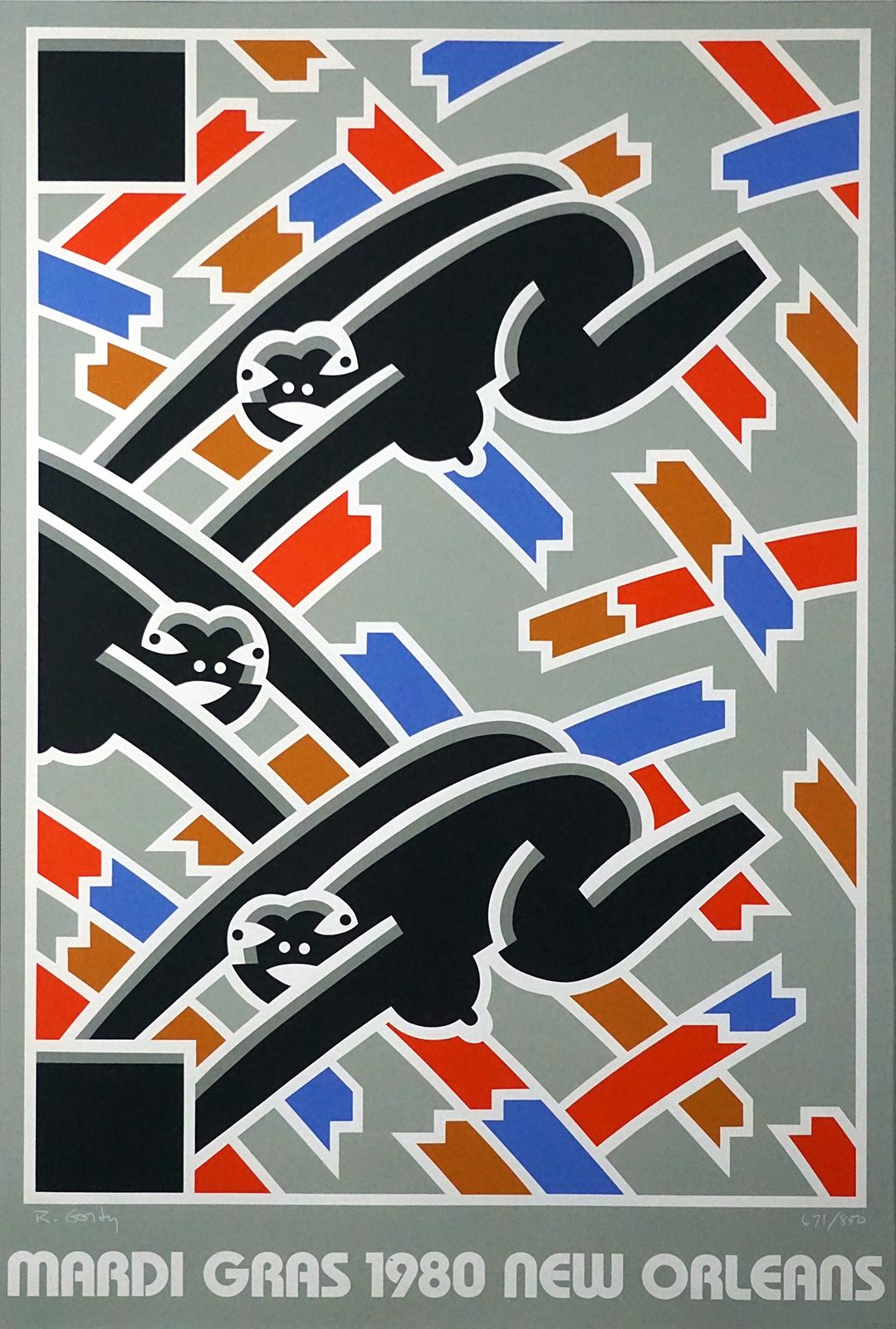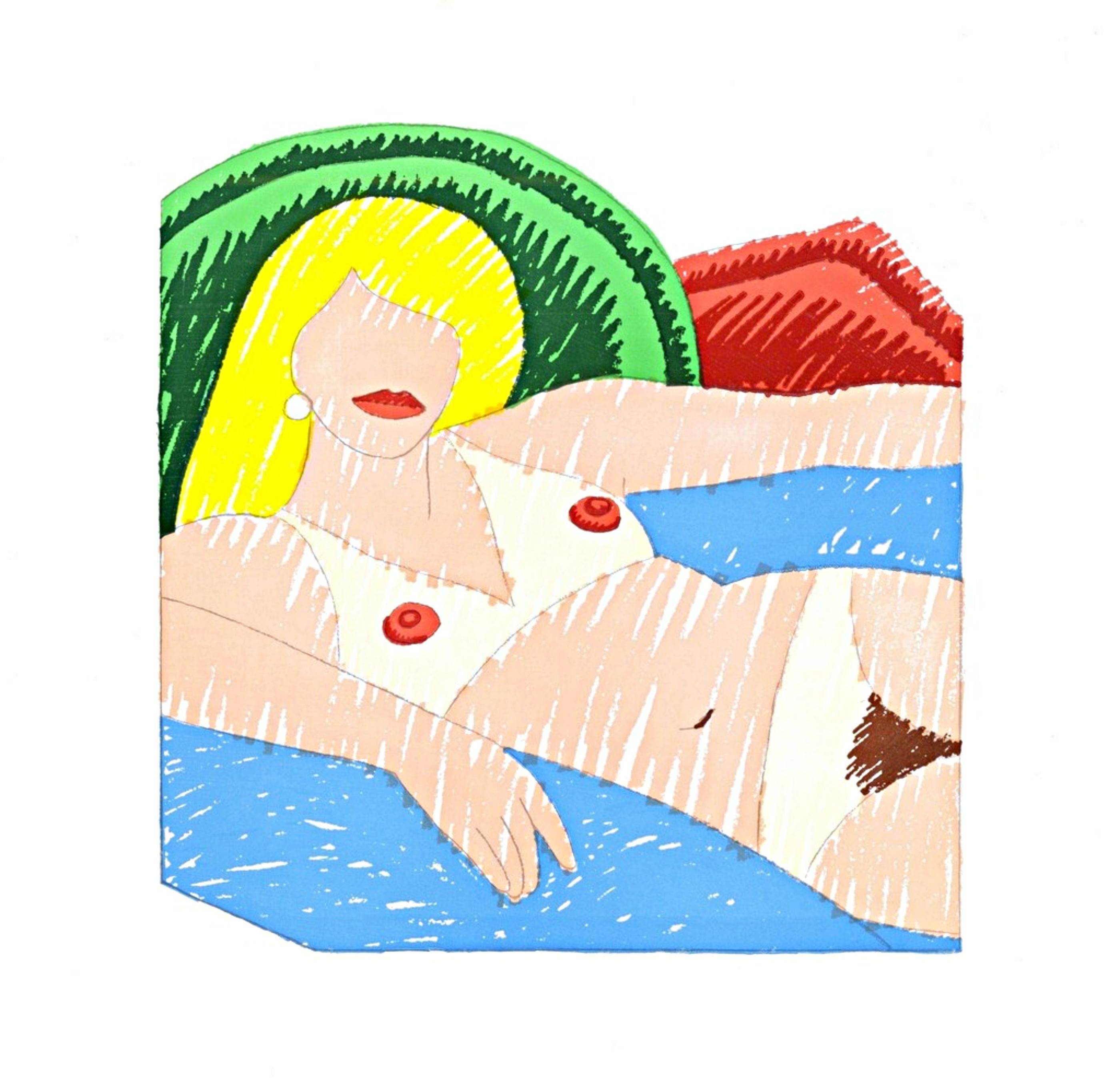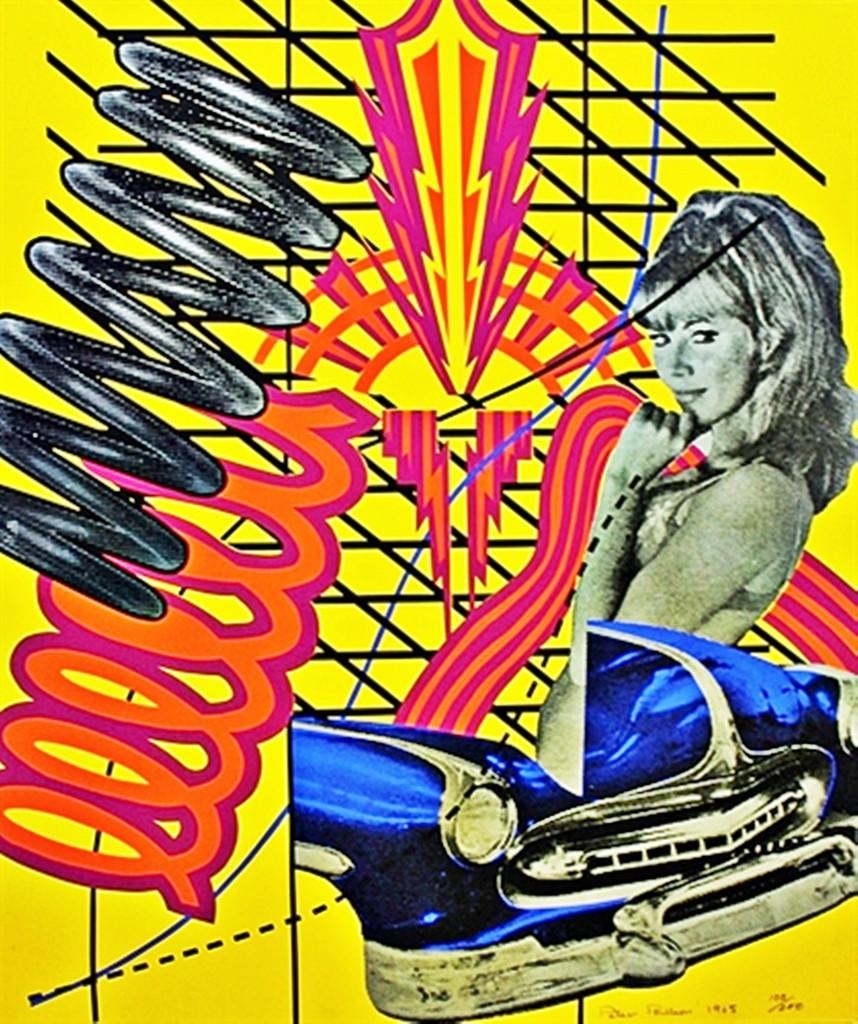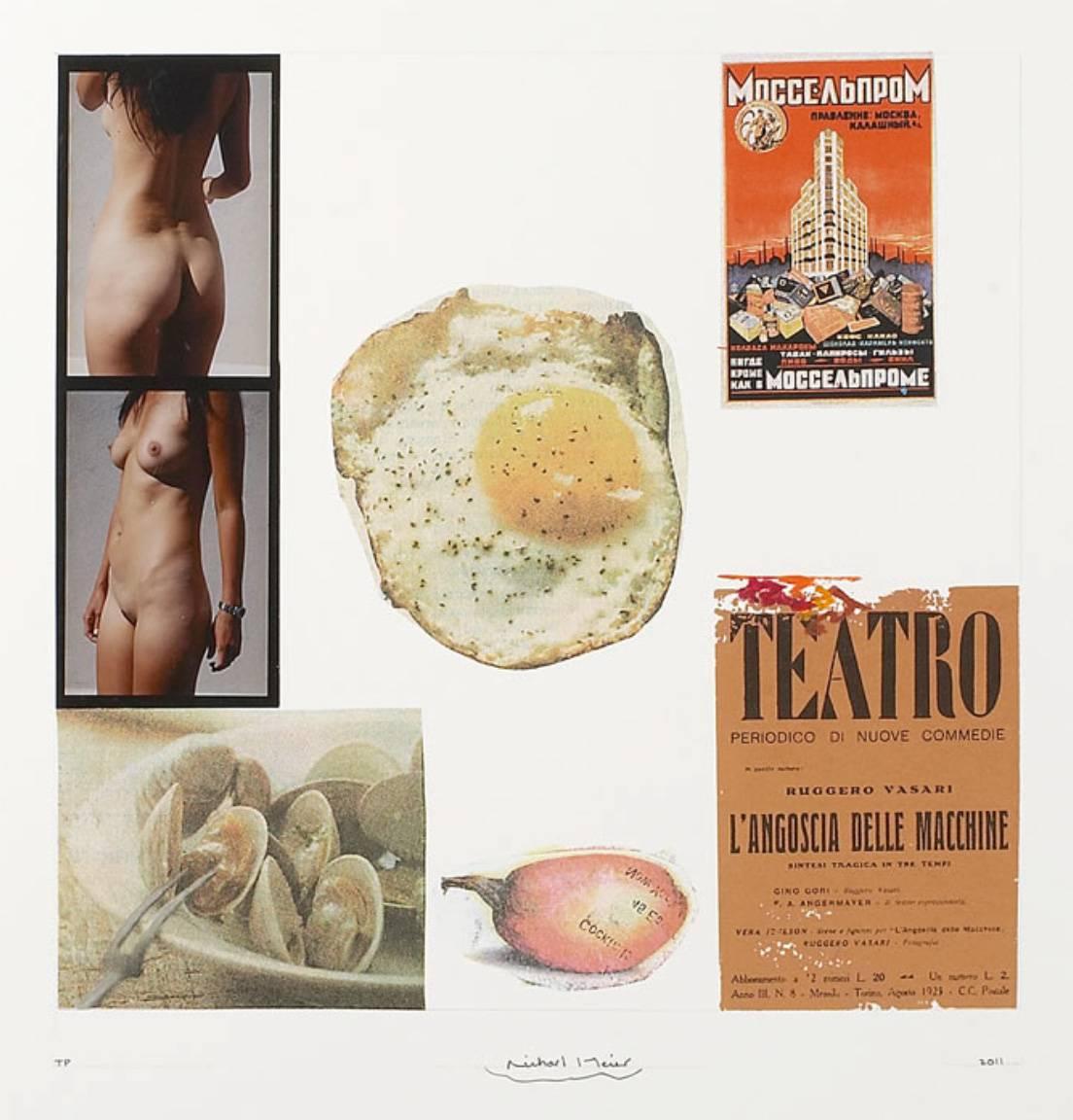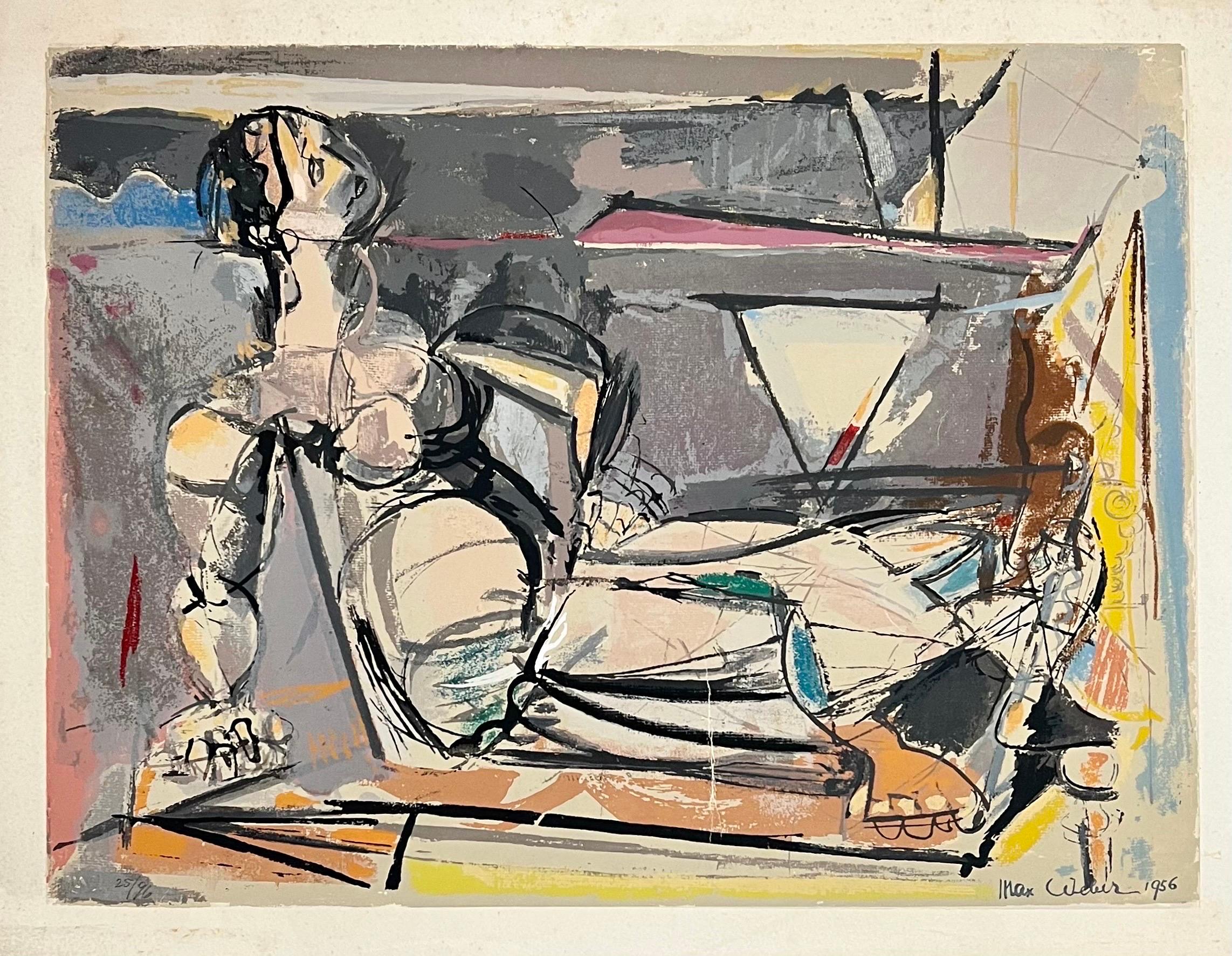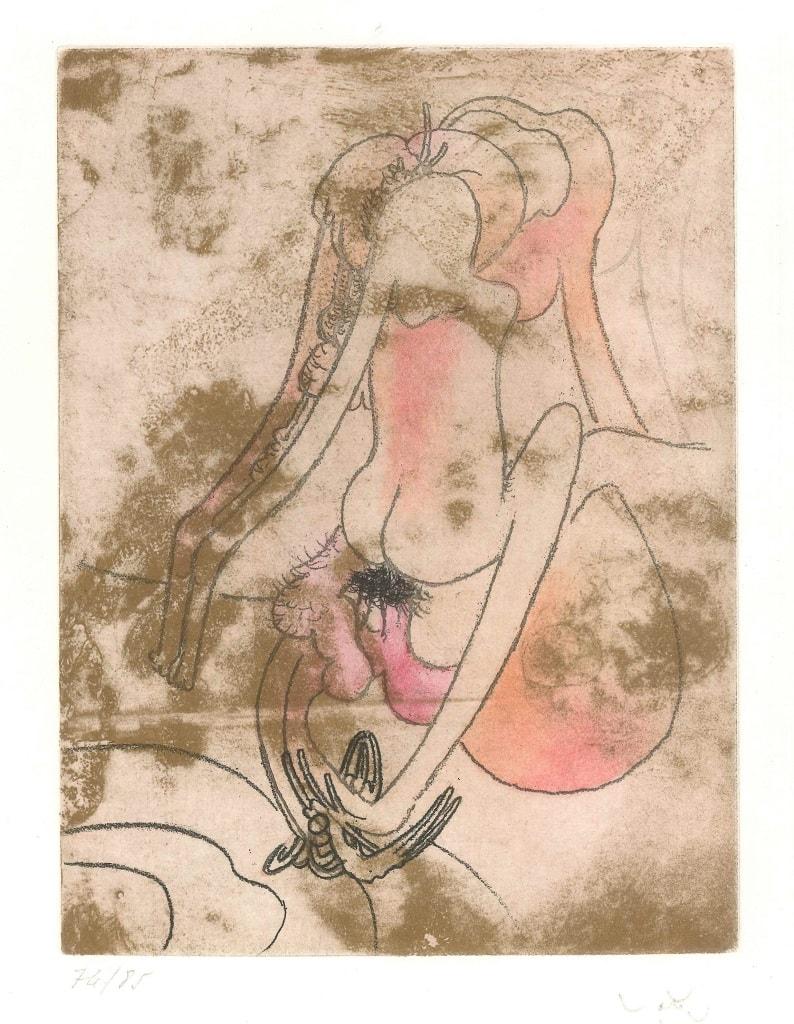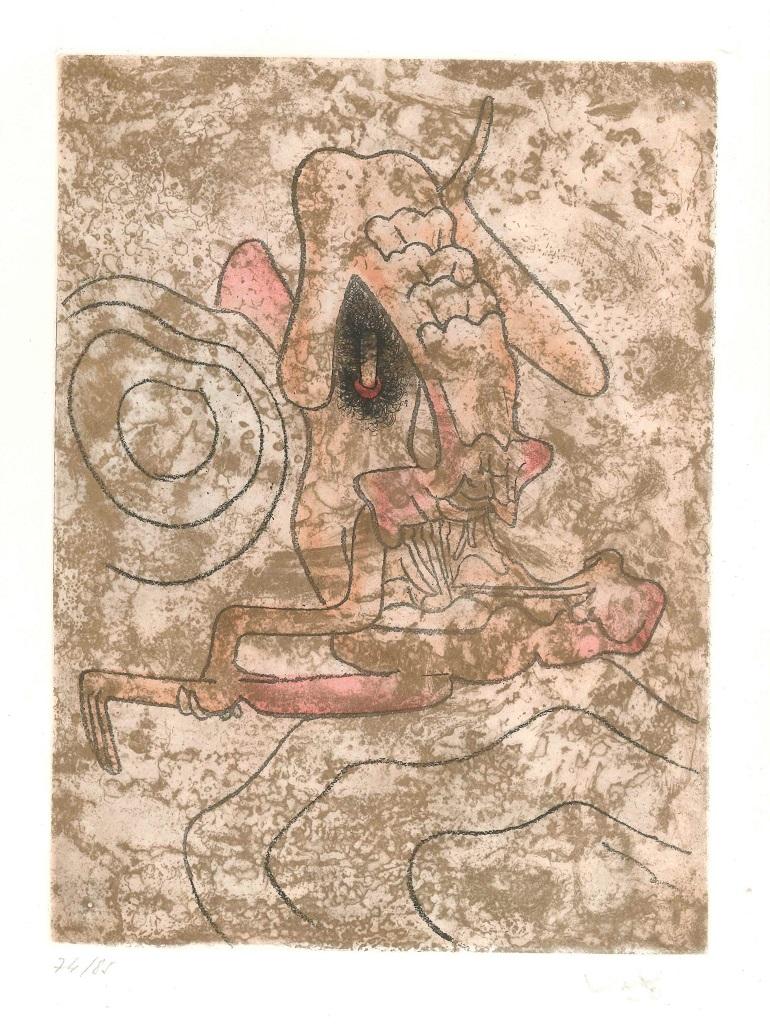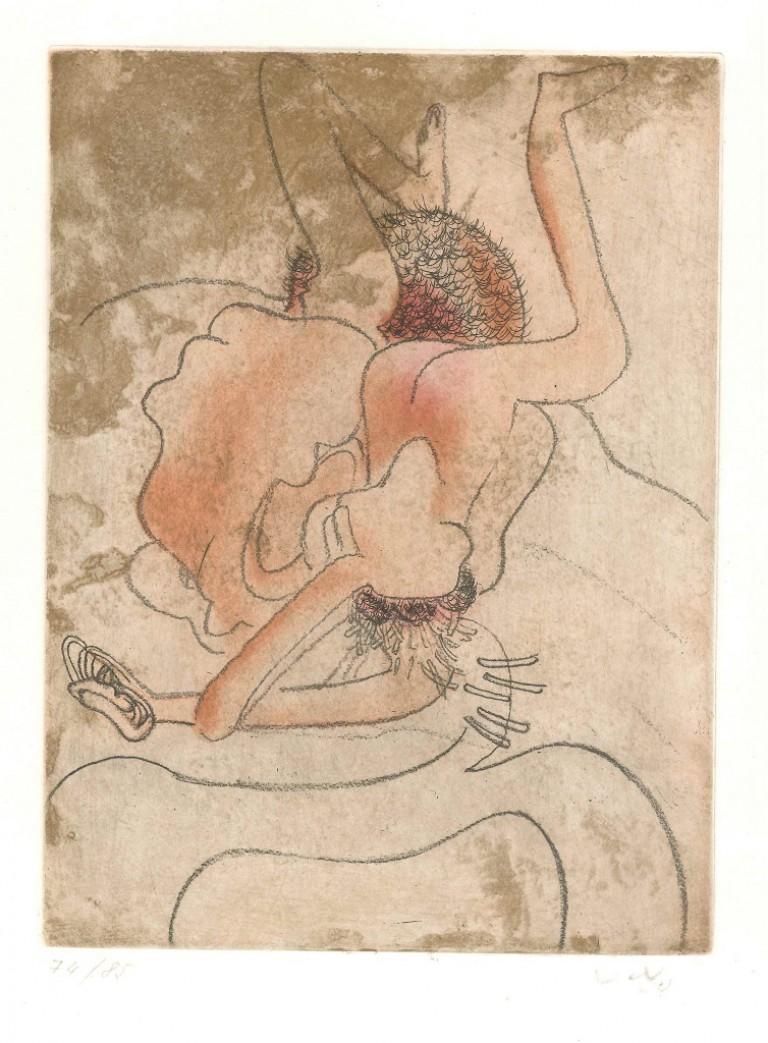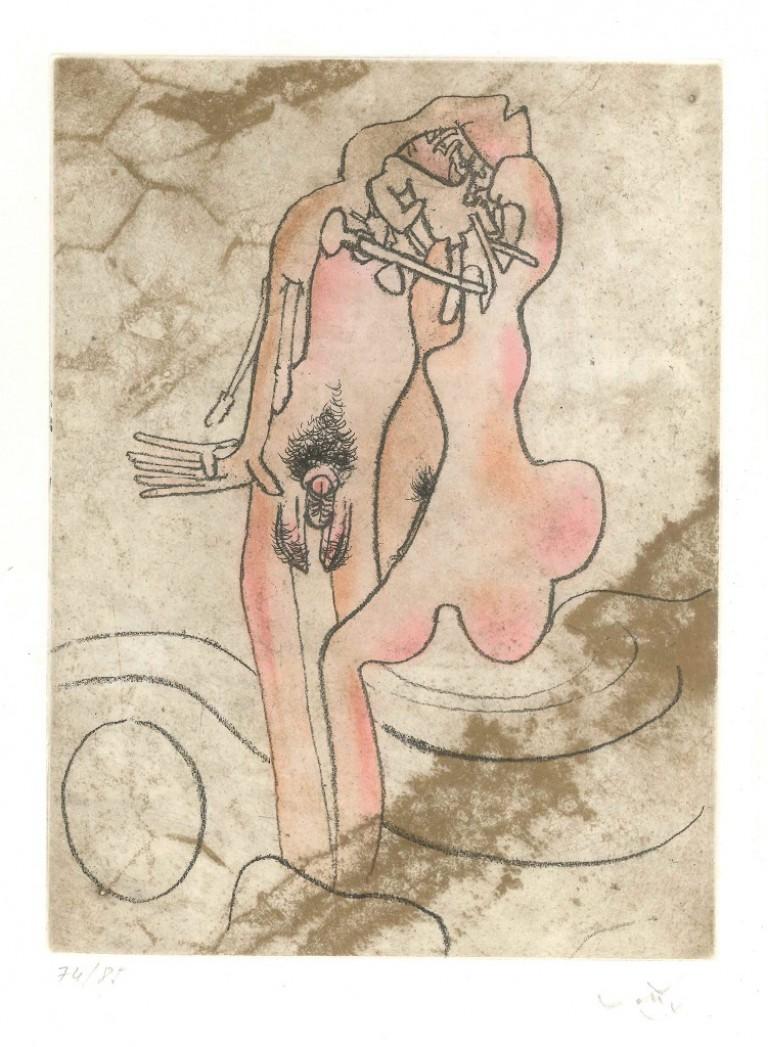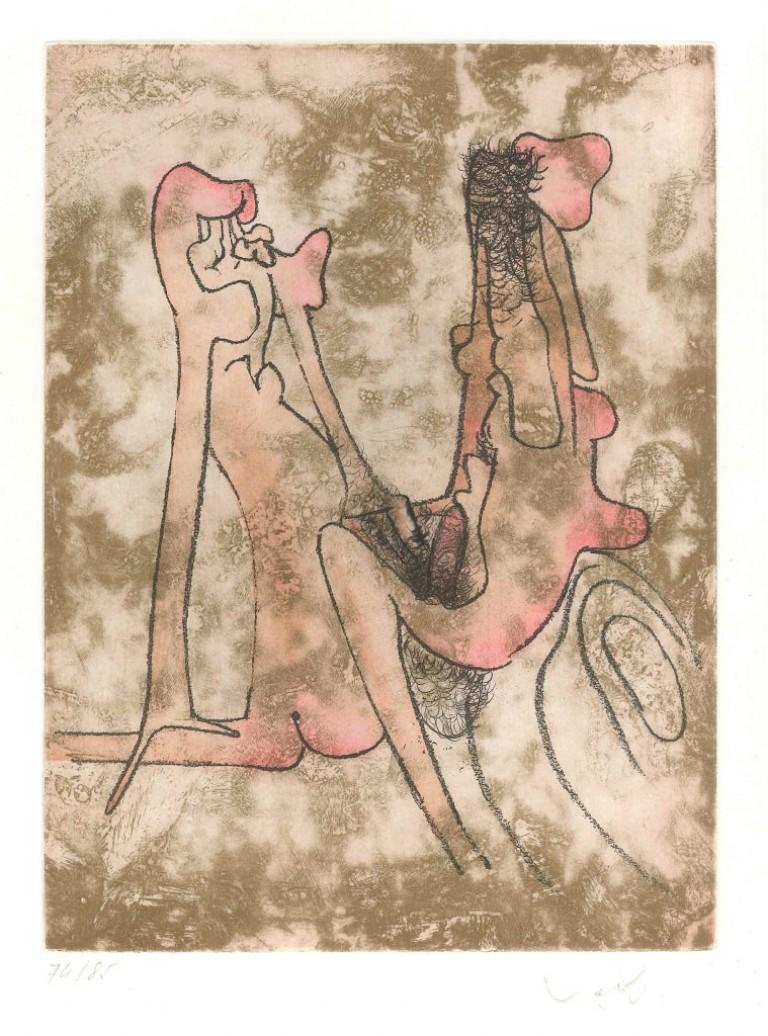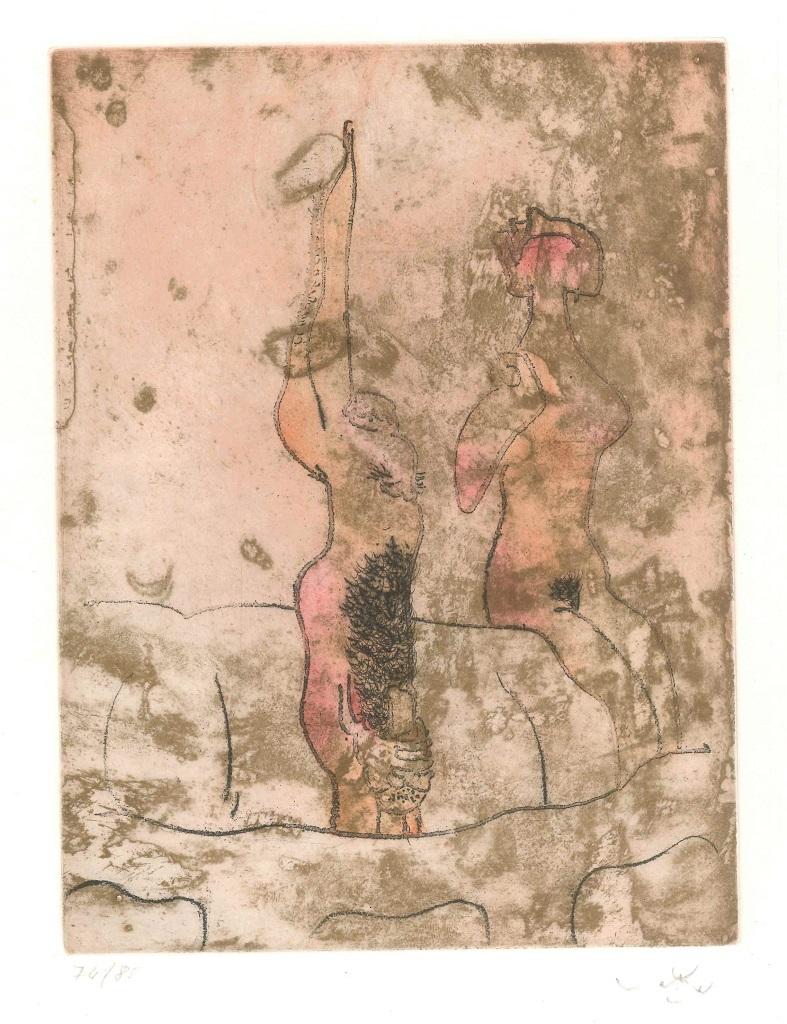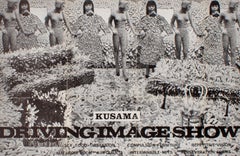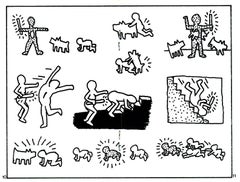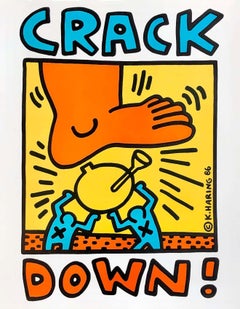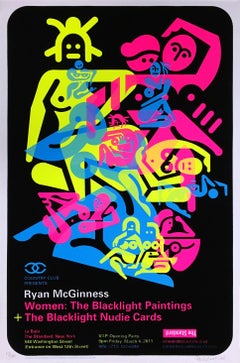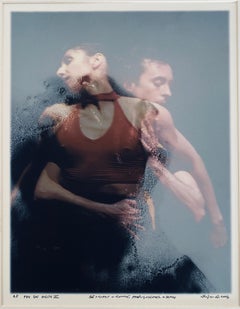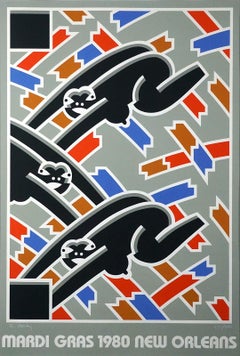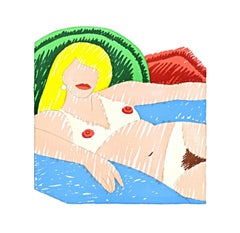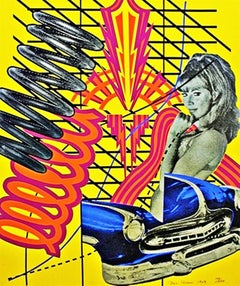
Signed Ryan McGinness Screenprint
View Similar Items
Want more images or videos?
Request additional images or videos from the seller
1 of 8
Ryan McGinnessSigned Ryan McGinness Screenprint2010
2010
About the Item
- Creator:Ryan McGinness (1971, American)
- Creation Year:2010
- Dimensions:Height: 35 in (88.9 cm)Width: 23 in (58.42 cm)
- Medium:
- Movement & Style:
- Period:
- Condition:Minor signs of handling.
- Gallery Location:NEW YORK, NY
- Reference Number:1stDibs: LU354311851002
About the Seller
5.0
Vetted Professional Seller
Every seller passes strict standards for authenticity and reliability
Established in 2014
1stDibs seller since 2016
4,498 sales on 1stDibs
Authenticity Guarantee
In the unlikely event there’s an issue with an item’s authenticity, contact us within 1 year for a full refund. DetailsMoney-Back Guarantee
If your item is not as described, is damaged in transit, or does not arrive, contact us within 7 days for a full refund. Details24-Hour Cancellation
You have a 24-hour grace period in which to reconsider your purchase, with no questions asked.Vetted Professional Sellers
Our world-class sellers must adhere to strict standards for service and quality, maintaining the integrity of our listings.Price-Match Guarantee
If you find that a seller listed the same item for a lower price elsewhere, we’ll match it.Trusted Global Delivery
Our best-in-class carrier network provides specialized shipping options worldwide, including custom delivery.More From This Seller
View All1960s Kusama exhibition poster (Yayoi Kusama Driving Image Show 1966)
By Yayoi Kusama
Located in NEW YORK, NY
Yayoi Kusama Driving Image Show:
An impossibly rare 1960s Kusama exhibition poster/brochure, published on the occasion of: Yayoi Kusama at Galleria del Naviglio Milan: Jan. 26-Feb. ...
Category
1960s Contemporary Nude Prints
Materials
Lithograph, Offset
Keith Haring Public Illumination 1981
By Keith Haring
Located in NEW YORK, NY
Keith Haring Public Illumination 1981:
A rare, highly collectible small pamphlet-style art magazine (measuring 4.25 x 2.75 inches), featuring a centerfold spread illustrated by Keith Haring, playfully credited under the moniker "Kip Herring."
The illustrations include some of Haring's signature early motifs including dogs, crawling babies, and figures in varying sexual positions.
A rare, early Haring collectible which quite possibly marks his first appearance in a printed publication.
Staple bound zine (art magazine), 4.25 x 2.75 inches.
Good to very good overall vintage condition; appears unused.
Unsigned from an edition of unknown.
Literature/References:
Printed Matter Inc., New York, NY
Public Illumination Magazine:
Founded by Zagreus Bowery in 1979 in New York and distinguished by its pocket-sized format, the publication rose to prominence in the underground art scene and was revered for its blatant mockery of mainstream magazines. The texts and drawings ranging from parody to absurdities. Contributions will be published exclusively under pseudonyms. By 2007, 51 issues appeared. The magazine is published irregularly and is available in the USA, Italy and Germany.
Writers and artists who have contributed include: Keith Haring, Ken Brown, Steve Dalachinsky, Michael Madore, David Sandlin...
Category
1980s Street Art Animal Prints
Materials
Paper, Lithograph, Offset
Keith Haring Crack Down! (Keith Haring 1986)
By Keith Haring
Located in NEW YORK, NY
Keith Haring Crack Down! 1986:
Vintage original Keith Haring anti-drug poster, 1986.
Off-set lithograph on heavy weight paper.
Dimensions: 17 x 22 inches.
Minor signs of handling; ...
Category
1980s Street Art Figurative Prints
Materials
Lithograph, Offset
$420 Sale Price
20% Off
Signed Ryan McGiness Women Screenprint
By Ryan McGinness
Located in NEW YORK, NY
Ryan McGinness “Women: The Blacklight Paintings":
Hand signed exhibition poster created by the artist for The Standard Hotel, 2010.
Screen-print with b...
Category
Early 2000s Pop Art Nude Prints
Materials
Screen
$200 Sale Price
60% Off
Signed Ryan McGiness Screenprint
By Ryan McGinness
Located in NEW YORK, NY
Signed Ryan McGinness screen-print:
Ryan McGinness, "Women: The Blacklight Paintings". The Standard Hotel, New York, 2010.
Screen-print with black flo...
Category
Early 2000s Pop Art Nude Prints
Materials
Screen
$250 Sale Price
50% Off
Futura 2000 Lee Quinones Dondi White Celebrating 15 Years Above Ground (7 works)
By Futura
Located in NEW YORK, NY
Dondi White, Futura, Lee Quinones, Crash, Daze, Lady Pink & Zephyr: Celebrating 15 Years Above Ground (1995):
This rare, complete portfolio of 7 hand-signed limited edition screen-prints, was published on the occasion of the 1995 exhibition, Celebrating 15 Years Above Ground: a historic event exploring the evolution of 1980’s New York graffiti legends: Crash, Daze, Dondi, Futura, Lee Quinones, Lady Pink, and Zephyr.
The seldom seen complete set of 7 works accompanied by both original portfolio covers, makes for a standout addition to any 1980’s New York graffiti collection.
Medium: 7 individual screen-prints in colors on fine, deckle-edged Stonehenge paper; plus a screen-printed portfolio cover on heavy matte paper. 1995.
Each work individually measures: 14 x 11 inches (35.6 x 27.9 cm).
Each hand-signed & numbered in pencil by the respective artists from an edition of 100 (5 works signed & numbered frontside; with Futura & Lady Pink signed & numbered on the reverse).
Condition:
Prints: Some very minor signs of handling; rubbing on the right lower edge of Zephyr; in otherwise very good overall vintage condition as pictured. Superb overall print quality & color separation. Fine archival paper.
Portfolio casing (last image) contains some minor signs of aging & handling.
Collections:
The Smithsonian National Museum of African American History and Culture.
Dondi White:
Dondi was an American graffiti artist best known for his dynamic lettering and stick figures. His work, whether painted on canvas or on walls, is characterized by a dynamic energy and explosive use of color. Dondi became associated with a group of legendary artists working in the East Village, including Futura, Keith Haring, and Jean-Michel Basquiat. His canvas works reiterated the lettering, symbolic icons, and stick figures that were his signature marks on the streets, while his later work from the 1990s included collages that juxtaposed pencil drawings with blueprints of the subway system—which had previously served as his canvas.
Futura:
Futura 2000 is a contemporary American graffiti artist. Over the course of his career, he transitioned from making New York-based subway graffiti in the early 1970s, to exhibiting at Fun Gallery in the 1980s alongside major artists such as Jean-Michel Basquiat, Keith Haring, and Kenny Scharf. He went on to collaborate with the punk band The Clash, designing their album art and performing live graffiti during their concerts. Today, McGurr’s work can be found in the collections of the Museo de Arte Moderna di Bologna, the Musée de Vire in France, and the Museum of the City of New York.
Lee Quinones:
Lee Quinones is an American-Puerto Rican artist known for the graffiti he made on New York subway cars during the 1970s and 1980s. Quinones addressed political and cultural issues through his graffiti, with quotes such as “Earth is Hell...
Category
1990s Street Art Abstract Prints
Materials
Screen, Lithograph
You May Also Like
Silkscreen Surrealist Pop Art Print "Pas De Deux"
By Michael Knigin
Located in Surfside, FL
Print without matte is 19" X 13".
Michael Knigin was born in 1942 in Brooklyn, NY. He attended and graduated from Tyler School of Art, Temple University. He received a Ford Founda...
Category
21st Century and Contemporary 85 New Wave Abstract Prints
Materials
Screen
Mardi Gras 1980 New Orleans (playful forms cavorting in the carnival fun)
By Robert Gordy
Located in New Orleans, LA
"Mardi Gras 1980, New Orleans", shows playful forms cavorting in the carnival celebration. It is signed in the lower left, and stamped/numbered "671/850" in the lower right corner. ...
Category
20th Century Abstract Geometric Abstract Prints
Materials
Screen
Shiny Nude (Stealingworth, 33), Lt. Ed silkscreen on kromekote paper + envelope
By Tom Wesselmann
Located in New York, NY
Tom Wesselmann
Shiny Nude (Stealingworth, 33), 1977
Silkscreen on glossy cast-coated Kromekote paper
8 × 8 inches
Edition of 1000
Pencil numbered from the l...
Category
1970s Pop Art Nude Prints
Materials
Screen, Paper
Custom Print I (from 11 Pop Artist, Volume I) I Dream of Jeannie & Blue Car
By Peter Phillips
Located in New York, NY
Peter Phillips
Custom Print I (from 11 Pop Artist, Volume I), 1965
Silkscreen on foil coated paper
24 × 20 inches
Pencil signed, dated and numbered 100/200.
Unframed
This dazzling, ...
Category
1960s Pop Art Nude Prints
Materials
Screen
Kabbalah
By Richard Meier
Located in New York, NY
Richard Meier
Kabbalah, 2011
Silkscreen collage with hand-coloring and photography
sheet size: 30" x 30"
signed numbered dated in pencil by the artist
edition of 50
Richard M...
Category
Contemporary Abstract Prints
Materials
Mixed Media, Screen
American Modernist Cubist Lithograph Screenprint "Reclining Woman" Max Weber
By Max Weber
Located in Surfside, FL
Reclining Cubist Nude Woman
Max Weber (April 18, 1881 – October 4, 1961) was a Jewish-American painter and one of the first American Cubist painters who, in later life, turned to more figurative Jewish themes in his art. He is best known today for Chinese Restaurant (1915), in the collection of the Whitney Museum of American Art, "the finest canvas of his Cubist phase," in the words of art historian Avis Berman.
Born in the Polish city of Białystok, then part of the Russian Empire, Weber emigrated to the United States and settled in Brooklyn with his Orthodox Jewish parents at the age of ten. He studied art at the Pratt Institute in Brooklyn under Arthur Wesley Dow. Dow was a fortunate early influence on Weber as he was an "enlightened and vital teacher" in a time of conservative art instruction, a man who was interested in new approaches to creating art. Dow had met Paul Gauguin in Pont-Aven, was a devoted student of Japanese art, and defended the advanced modernist painting and sculpture he saw at the Armory Show in New York in 1913.
In 1905, after teaching in Virginia and Minnesota, Weber had saved enough money to travel to Europe, where he studied at the Académie Julian in Paris and acquainted himself with the work of such modernists as Henri Rousseau (who became a good friend), Henri Matisse, Pablo Picasso, and other members of the School of Paris. His friends among fellow Americans included some equally adventurous young painters, such as Abraham Walkowitz, H. Lyman Sayen, and Patrick Henry Bruce. Avant-garde France in the years immediately before World War I was fertile and welcoming territory for Weber, then in his early twenties. He arrived in Paris in time to see a major Cézanne exhibition, meet the poet Guillaume Apollinaire, frequent Gertrude Stein's salon, and enroll in classes in Matisse's private "Academie." Rousseau gave him some of his works; others, Weber purchased. He was responsible for Rousseau's first exhibition in the United States.
In 1909 he returned to New York and helped to introduce Cubism to America. He is now considered one of the most significant early American Cubists, but the reception his work received in New York at the time was profoundly discouraging. Critical response to his paintings in a 1911 show at the 291 gallery, run by Alfred Stieglitz, was an occasion for "one of the most merciless critical whippings that any artist has received in America." The reviews were "of an almost hysterical violence." He was attacked for his "brutal, vulgar, and unnecessary art license." Even a critic who usually tried to be sympathetic to new art, James Gibbons Huneker, protested that the artist's clever technique had left viewers with no real picture and made use of the adage, "The operation was successful, but the patient died."[8] As art historian Sam Hunter wrote, "Weber's wistful, tentative Cubism provided the philistine press with their first solid target prior to the Armory Show."
The Cellist...
Category
Mid-20th Century Cubist Abstract Prints
Materials
Screen
